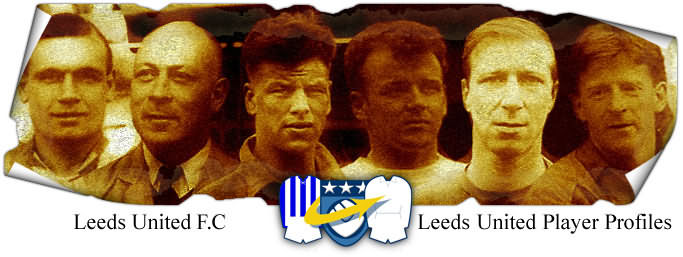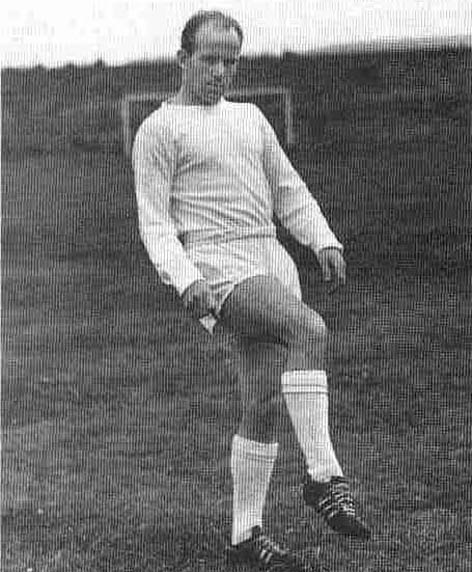

Smith: John Eric (Eric)
1960-1964
(Player Details)
Right Half
Born: Glasgow: 29-07-1934
Debut v Liverpool (a): 20-08-1960
5’5” 11st 5 1/2lb (1963)
Smith began with St Andrew’s Juveniles and Pollok in 1951, then Glasgow Benburb, before
joining Celtic on 2nd April 1953. His progress was interrupted somewhat by National Service.
He served initially with the 6th Training Regiment of the Royal Engineers, stationed at
Norton Camp, Worcester. There he served with other Scottish Footballers such as Dave McKay
of Hearts, Bobby Walker of Hamilton and Ralph Brand of Rangers from 1955 to 1957. Sometimes
able to get back for games, but often not. At the end of his National Service he became a
regular at Parkhead. He had made his Scottish League debut in a 1-1 home draw with Queen of
the South on 16th October 1954, scoring his first goal for the club in a 1-1 draw at
Kilmarnock on 19th February 1955 in the Scottish Cup. His first Scottish League goal soon
followed on 26th February 1955 in a 5-2 home win over St Mirren. In his career at
Parkhead he scored twelve goals in ninety-five Scottish League appearances, adding five
goals in nineteen Scottish Cup ties, three goals in sixteen Scottish League Cup ties and
one goal in three Glasgow Cup ties, for a total of twenty-one goals in one hundred and
thirty-three appearances. Smith was an all action style of player and so versatile that he
could play in any position and during his time with Celtic he played at half-back,
inside-forward and on the wings. He was in his element with the physical aspect of the game
and was at his best when the going was toughest. His combination of courage and skill
allowed him to control games and he was a hugely popular with the Celtic fans. However, he
did not play for the Bhoys at a successful time and he and the team had little to show for
their endeavours. Indeed all they had to show was a Scottish Cup runners-up medal in 1956
after Celtic were beaten 1-3 by Hearts in the Final at Hampden Park, in front of one
hundred and thirty-two thousand, on 21st April 1956.He was capped twice by Scotland in 1959,
making his debut at right-half in a 2-1 win over the Netherlands at the Olympic Stadium,
Amsterdam on 27th May 1959 and his second and final cap came a few days later on 3rd June
1959 at the Estadio Jose Alvalade, Lisbon, when he again wore the Number Four shirt as
Scotland went down to Portugal 0-1. He signed for Leeds on 11th May 1960 for £10,000. It
was anticipated that his experience and grit would stiffen United’s defence, but that idea
was scuppered when he broke his leg in his second game for Leeds, first game of the season
at Elland Road, in a 1-1 draw with Bristol Rovers on 24th August 1960. This saw him
sidelined until 31st December 1960 when he made his comeback in a 3-1 win at Rotherham
United. A versatile player, Smith featured at right-half and inside right in that first
season and managed to make eighteen League starts by season's end, despite not having
fully recovered. The Scottish International was to suffer badly from injuries during his
time with Leeds. In 1961-62 he started at right-back but after seven games reverted to his
previous roles as he only missed one League game. The following season saw the arrival of
the neucleus of Revie’s successful team and, after a few appearances, he found Norman
Hunter, Paul Reaney, Willie Bell, Billy Bremner and Jim Storrie barring his way in his
favoured positions. He had maintained his position in the half back-line playing in six of
the first eight games in the half-back role but it was in the 2-0 home win over Chelsea on
15th September 1962, the game after the blooding of Gary Sprake, Paul Reaney, Norman Hunter
and Rodney Johnson at Swansea, that his Leeds career effectively came to an end as he
suffered a double-fracture of the leg. It proved to be his final League game for Leeds. He
did play once more in a 1-3 defeat at Maine Road, Manchester, when an under-strength Leeds
team went down to Manchester City, in the Fourth Round of the League Cup, when their eyes
were firmly on promotion, which was achieved at the end of that season. He joined Morton in
1964 where he played for two seasons and later became manager. In June 1964 he went to
Morton before retiring in 1966 and became coach after scoring three goals in thirty-five
League appearances. On his return to Glasgow he owned a pub called the Bosanova being
granted a licence on 20th October 1964 and was till running the pub in 1973. He also owned
the Tartan Bar for a time. He was Manager of Morton for a short while in 1972, after
spending some time in Cyprus as coach with Pezoporikos Larnaca. Shortly after recommending
one of his young Morton players, Joe Jordan, to Leeds, he was appointed Managerof Hamilton
Academicals in 1972. He held the position until April 1978 when he became Manager of
Sharjah FC in the United Arab Emirates. Between June 1982 and May 1983 he was Assistant
Manager to Don Revie at Al Nasr, becoming Manager of Al Shaab the following year. He
returned to Cyprus to coach Pezoporikos in the 1980s and died of a heart attack on holiday
in Dubai on 12th June 1991.